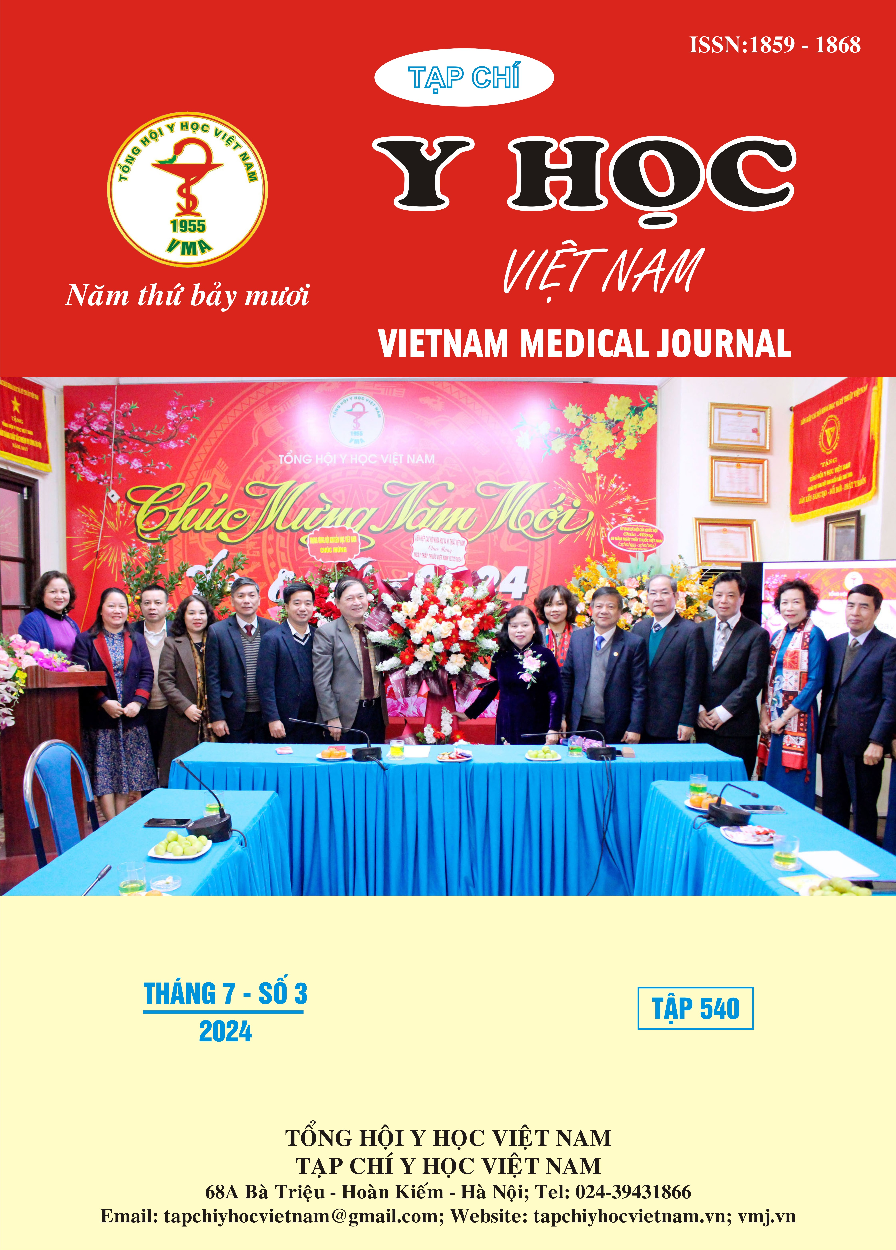EFFECTIVENESS AND SAFETY OF LARYNGEAL MASK AIRWAY IN EMERGENCY AIRWAY MANAGEMENT OUT OF THE HOSPITAL
Main Article Content
Abstract
Background: Tracheal intubation is a time- and skill-required maneuver, while bag-valve mask ventilation is only temporary and unreliable. In prehospital settings, laryngeal mask airway (LMA) may be a suitable alternative. Purposes: To evaluate the efficacy and safety of the Supreme and Proseal LMAs for out-of-hospital airway control. Patients and Methods: A prospective and descriptive study was carried out at the Hanoi 115 Emergency Center. Thirty-two emergency patients required for airway control outside of the hospital were included. The paramedics had a two-day course of training about LMAs. The endpoints included the number of attempts and time for LMA insertion, success rate, degree of difficulty, ventilation efficacy, and adverse events recorded. Results: The LMAs were successfully applied to all patients who required airway control (23 Supreme, 9 Proseal). The incidence of successful insertion on the first and second attempts was 87.5% and 12.5%, respectively. The mean time of insertion was 19.7 ± 8.9 seconds. After 3 and 5 minutes of LMA insertion and ventilation, there was a noticeable improvement in oxygen saturation, cyanosis, and Glasgow score. The LMA insertions were considered easy (83.3%) and moderate (16.7%) by paramedics. No adverse events were observed. Conclusions: Supreme and Proseal LMAs provided rapid, effective, and safe airway control outside of hospital settings.
Article Details
Keywords
Supreme LMA, Proseal LMA, airway management, out-of-hospital emergency
References
2. Doucet, J.J., R. Coimbra, and D.B. Hoyt, Prehospital airway management: Intubation, devices, and controversies, in Current Therapy of Trauma and Surgical Critical Care (Third Edition), J.A. Asensio and J.W. Meredith, Editors. 2024, Elsevier: Philadelphia. p. 32-38.e2.
3. Hasegawa, K., et al., Association of prehospital advanced airway management with neurologic outcome and survival in patients with out-of-hospital cardiac arrest. JAMA, 2013. 309 (3): p. 257-66.
4. Henlin, T., et al., Oxygenation, Ventilation, and Airway Management in Out-of-Hospital Cardiac Arrest: A Review. BioMed Research International, 2014. 2014: p. 11.
5. Wang, H.E. and D.M. Yealy, Out-of-Hospital Endotracheal Intubation: Where Are We? Annals of Emergency Medicine, 2006. 47 (6): p. 532-541.
6. Lighthall, G., T.K. Harrison, and L.F. Chu, Laryngeal Mask Airway in Medical Emergencies. New England Journal of Medicine, 2013. 369 (20): p. e26.
7. Cook, T. and B. Howes, Supraglottic airway devices: recent advances. Continuing Education in Anaesthesia, Critical Care & Pain, 2011. 11(2): p. 56-61.
8. Barata, I., The Laryngeal Mask Airway: Prehospital and Emergency Department Use. Emergency Medicine Clinics, 2008. 26 (4): p. 1069-1083.
9. Cook, T.M., G. Lee, and J.P. Nolan, The ProSeal laryngeal mask airway: a review of the literature. Can J Anaesth, 2005. 52 (7): p. 739-60.
10. Wong, D.T., J.J. Yang, and N. Jagannathan, Brief review: The LMA Supreme supraglottic airway. Can J Anaesth, 2012. 59 (5): p. 483-93.


